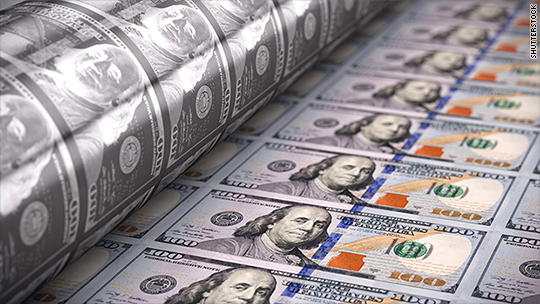“Economics is not an exact science. It’s a combination of art and elements of science”, said Paul Samuelson, the first American to win the Nobel Prize in Economic Sciences. Central banks seem to have forgotten this lesson in recent decades. Banning central banks from purchasing the debt of their own country has been, until the 2008 crisis, engraved in scarlet letters on the first page of any monetary policy textbook. The reason behind this was the inflationary consequences that such an approach, involving the printing of money, would cause.
Yet, the act of printing money, which soothed the pains of the economic crisis at first, has been stubbornly used for more than a decade until it became addictive. Governments and financial markets alike became the ‘prisoners’ of free money printed by the central banks in order to finance national budget deficits and boost the economy.
 The problem is that, despite the lack of economic models which provide for an accurate assessment of consequences, central banks doubled down on money printing during the pandemic, concerned with containing the economic recession and supporting the governments. They underestimated the strong economic recovery they were about to cause, while governments were using that free money to pay subsidies and other economic incentives.
The problem is that, despite the lack of economic models which provide for an accurate assessment of consequences, central banks doubled down on money printing during the pandemic, concerned with containing the economic recession and supporting the governments. They underestimated the strong economic recovery they were about to cause, while governments were using that free money to pay subsidies and other economic incentives.
Instead of a gradual economic recovery that would have allowed businesses to adjust their modus operandi through a seamless transition, the aggregate demand shock induced major tensions to the global supply chains, the energy markets and the labour markets. They all came together under the common denominator of generalised price increases.
It is almost as if central banks used a compass instead of high-precision technology to guide the ballistic missile of quantitative easing. At first, the bomb was powerful enough to make believe it reached its target. But now they see that reaching the target was due to the large-scale shock instead of its precision. Central banks appear to have forgotten that economics is not an exact science.
Now they have to fight for their most valuable asset, which is credibility. And it is a fight which they cannot afford to lose, for their sake and everyone else’s. We can easily imagine a tipping point beyond which currencies, printed with no limit, will lose their credibility, encouraging people to get rid of them in exchange for real assets. That would make Paul Singer’s recent prediction about hyperinflation to come true.
Avoiding an economic disaster larger than this should be the only reason for a return to quantitative easing guided only by a compass.
(a previous post, Paying the price for the loss of central bank independence, adapted for IPE’s Outlook for 2023)



